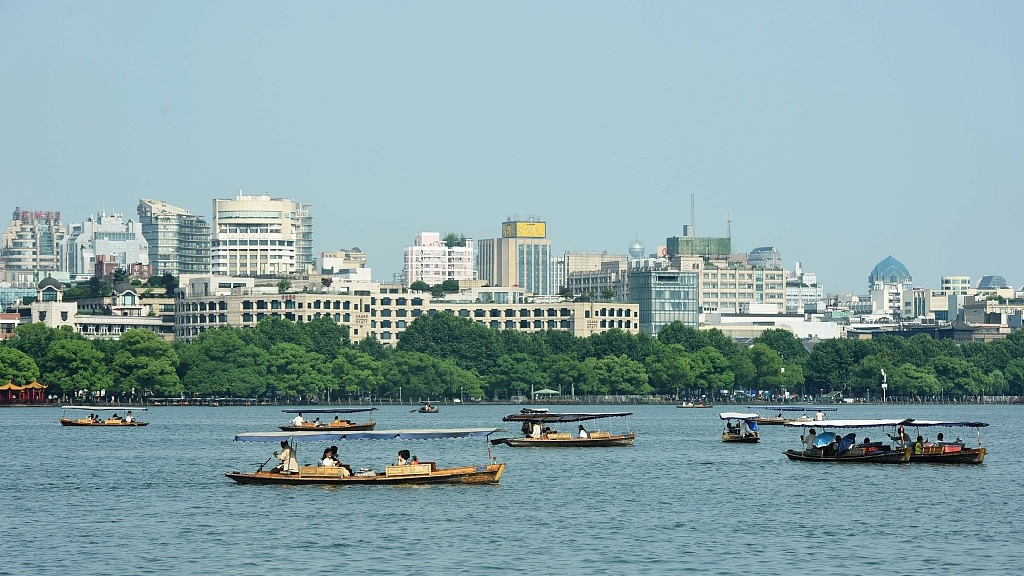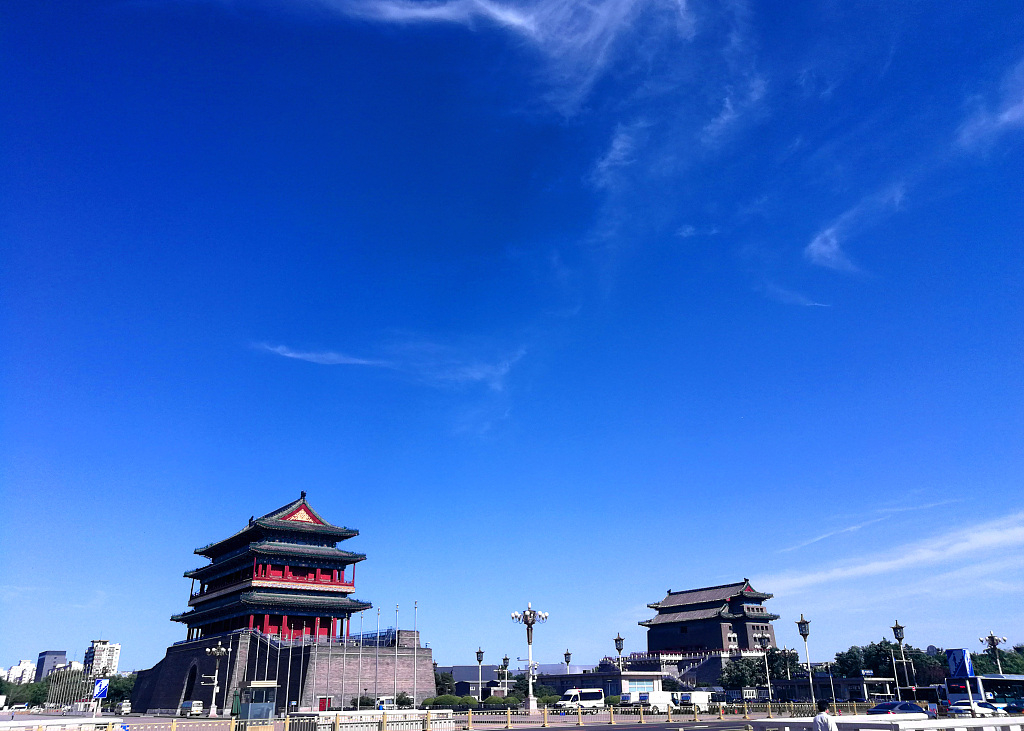
Opinion
08:21, 05-Jun-2019
China winning its battle on air pollution
Wu Changhua

Editor's note: Wu Changhua is CEO of Beijing Future Innovation Center and executive director of the Professional Association for China's Environment. The article reflects the author's views, and not necessarily those of CGTN.
June 5 marks the World Environment Day. This year, "air pollution" is set as the theme of the day.
When it comes to air pollution, China's capital city Beijing was once notoriously plagued by the issue.
The country's social media account BeijingAirNow is among the best windows to show the ups and downs of ambient air quality in Beijing. One photo has been taken every day at the same spot in the past six years by its founder Zou Yi to document daily changes of PM 2.5 concentrations in the city.
However, as these photos have shown, air quality has been improving in Beijing.
Measured by the concentration of fine particles per cubic meter of air, the city experienced a continuous drop in average daily PM 2.5 concentrations or API (Air Pollution Index), from 89.5 in 2013 to 50.45 micrograms per cubic meter of air in 2018.
The municipal government made a commitment in 2013 to achieve a target of 58 micrograms per cubic meter by 2018 to implement the Ten Actions to fundamentally address the air pollution problem.
Popularly known as China's Battle on Air Pollution, the Ten Actions were put forward by Premier Li Keqiang in June 2013, which is regarded as an elevated and accelerated move to tackle air pollution sources and protect public health.
Presenting an integrated solution, the Actions set 5-year targets to provide clarity and commitment from the government for industries and society to act together. Besides annual average daily concentration targets, high-polluting and high-energy consumption industries are required to enhance their efforts to achieve at least 30-percent reduction of air pollution emissions per 10,000 RMB of industrial outputs by 2017.
There is a Chinese saying that you can only solve the problem by addressing the root cause. The Actions clearly identified sources of pollution and set as primary goals focusing on removal of small coal-burning boilers, industrial desulfurization and de-Nox, vehicular fuel quality and efficiency improvement, and phase-out of heavy polluting industries' overcapacity, such as cement, iron and steel.

Chang'an Street, Beijing, China, May 27, 2019. /VCG Photo
Chang'an Street, Beijing, China, May 27, 2019. /VCG Photo
Shutting down facilities and phasing out old vehicles help solve the problem. And yet for a longer run, the country has to rely on technological innovation, business model innovation, and system transformation in order to achieve sustainable development. Cleaner production for industrial process, electrification of transportation, clean and renewable energy, and energy efficiency are among the top priorities China has been advancing to effectively improve air quality.
Moreover, legislative foundation is crucial to ensure long-term transformation and drive fundamental shifts. In the last five years, Chinese legislators have amended the Environmental Protection Law, and Air Pollution Prevention and Control Law.
Regarded as the first piece of environmental legislation with “teeth,” the amended Environmental Protection Law sets clear and more forceful articles on liabilities, not only administrative and financial liability, but also criminal liability. From the judiciary side, the Environmental Courts have taken tens of thousands of lawsuits in the past five years.
Information disclosure and transparency have also become a required act for governance. Very importantly, social media has offered the public a powerful tool for them to play the role of watchdogs so as to monitor polluters and environmental law violators.
While Beijing and other provinces/cities are all taking action, we all know that air pollution is not limited to certain regions. And the Chinese population is mostly concentrated in certain regions along the eastern coast.
The government has identified some priority regions to drive more aggressive actions, including the Beijing-Tianjin-Hebei region, the Yangtze River Delta region, and the Pearl River Delta region. With three quarters of its population and GDP, those regions are well equipped with expertise and finance to lead in implementing solutions.
Living in Beijing, I can tell that the number of blue-sky days has been increasing. And yet, there are always days when heavy smog cloaks the city. An emergency response mechanism is mandated by legislation and national government for local governments to temporarily shut down industrial facilities and take a certain number of vehicles off the roads. Schools are also required to shut down if heavy smog occurs.
In the last six years, more than 100 million people have followed BeijingAirNow. China has about 700 million smartphones today. Thanks to the digitalization and AI technology, any individual could use his or her smartphone to take a photo of their neighborhood, send it online, and get the reading for PM 2.5. When people are empowered by information and knowledge, they desire better air quality for themselves and for their children as well as their grandchildren.
(If you want to contribute and have specific expertise, please contact us at opinions@cgtn.com.)

SITEMAP
Copyright © 2018 CGTN. Beijing ICP prepared NO.16065310-3
Copyright © 2018 CGTN. Beijing ICP prepared NO.16065310-3